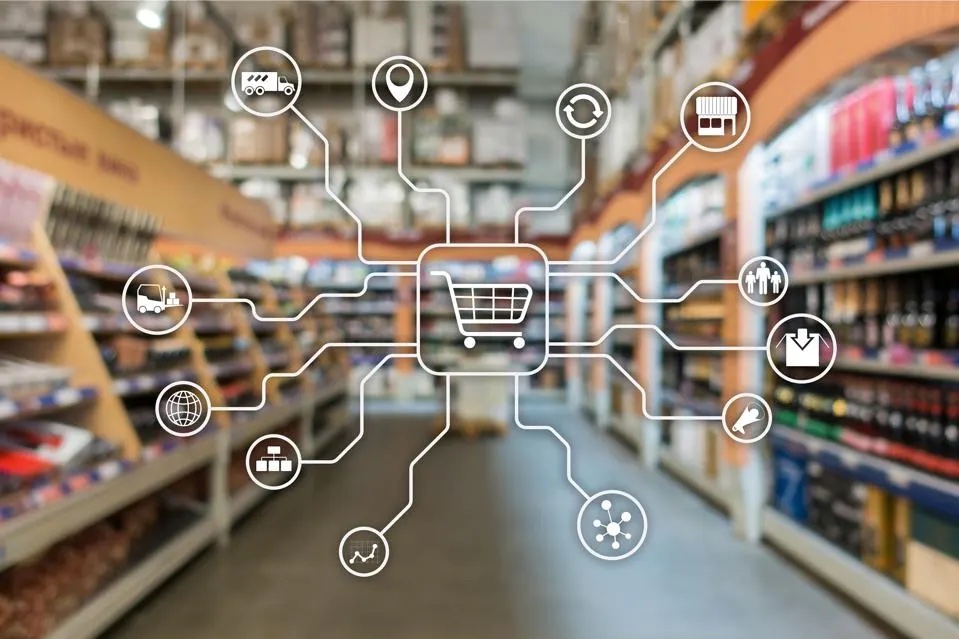What’s New in Times Square? Let’s take a digital safari…
Recently, CRI’s SVP of marketing Beth Warren set out on a “digital safari” through New York City’s infamous, ever-changing Times Square. According to recent stats, approximately 360,000 people pass through Times Square daily, the majority of those being tourists. Beth’s intention for her safari through this major commercial intersection–one she has visited countless times as a native New Yorker –was to see what kinds of changes, trends, and surprises she might discover in terms of the myriad of digital signage strategies deployed in order to stand out in one of the most highly competitive, highly saturated marketplaces on earth.
Walking on foot and armed with her notes app and a camera, Beth documented her impressions. We’re pleased to share her journey here. These are her notes.
Times Square: The epicenter of digital signage
I’ve always loved New York, and I’ve always loved Times Square. Every time I go, I see something new, something exciting, something brilliant. It’s a place where taking big chances can either change the course of a brand or expedite its downfall. I thought it would be interesting to revisit a place that I go to very frequently and get a pulse on how things have changed since the last time I was there, which was a short 6 weeks prior in April. And since then, much of the landscape looks different if you examine closely.
Times Square is a one-of-a-kind digital epicenter where the commercial competition is fierce. Screens are stacked high, vying for the attention of millions of tourists, native New Yorkers, and daily commuters. Every inch of real estate is leveraged for digital displays. In Times Square the strategy isn’t just about being innovative, it’s also about continuously evolving, continuously pushing the envelope to turn heads, get noticed, and deliver audience impressions to the media community. The brands who stay ahead in Times Square have always been the ones who keep updating and refining their digital content to stand out amidst the visual cacophony. My discovery is what’s happening not so much on the outside, but what’s going on behind the doors of famous retailers and brands who have put a stake in the ground and often double down on the role of digital inside their four walls.
DIY ordering, immersive mixed media, and brilliant omnichannel strategies
My safari began at Krispy Kreme, located at 49th and Broadway. In the six weeks since I’d been there last, the transformation was striking. The last time I’d come in, they’d had high-top tables and projection technology to engage customers. Now, the seating area has been replaced with self-order kiosks. This is part of a “DIY” trend I’ve noticed in QSRs, meant to enhance operational efficiency and increase throughput. It’s a smart move for QSR experience, because customers tend to order more–up to 20%–when they use self-service kiosks because they feel less self-conscious about the items they desire (admit it, you’ve been there, too). And in a place like Times Square where you have people coming in from all over the world, the option of ordering from a self-serve kiosk helps alleviate some of the stress that can be caused by language barriers.

The other restaurant that impressed me on my safari was the Raising Canes flagship store on Broadway. They’re nailing their omnichannel marketing strategy. The last time I was in TSQ it had been under construction, but that’s all been completed and it’s now open to the public–and it was worth the wait. It’s spectacular; a real visual feast and completely mixed media experience. You go in, there’s a number of LED configurations that greet you, squares and cubes that rotate in a visually appealing way. The branding is consistent–their signature red is everywhere–and it has a friendly, inviting vibe. Even the floor is part of the experience: it’s laid out like a red racetrack, directing you to the dedicated areas for mobile and kiosk pickups. There’s no confusion about where to pick up your order, whether you’re a customer who ordered using a mobile app or if you’re a concierge service like DoorDash. The thing I loved about it was how they create a whole experience in their store, and they make it so easy for the customer to engage and transact how and where they wish – to grab and go or to pause for a bite. This “global flagship” as its signed is a must-visit for those who crave a best in class experience as a guest – or as a digital practitioner.

The other place that impressed me with its omni channel offering was JD Sports, also located on Broadway, although just beyond the Times Square lease line, so to speak. When you enter the store, it’s a whole immersive experience. The store’s architecture offers floor-to-ceiling LED displays, digital podiums, and interactive tools like digital try-ons. I was particularly impressed by a digital screen that lists order statuses, allowing people to track purchases in real-time. I played with some of these elements and found that the virtual try-on screen wasn’t functioning properly, though, which detracted slightly from the overall experience. Kind of a thumbs-down as I was lured in by the tech and curious to engage, and when it didn’t respond to repeated attempts – it harkened back to the burden being on us [myself, my company] to get it fixed quickly.


Landmarks and highlights
After my stops at Krispy Kreme, Cane’s, and JD Sports, I was excited to stop in at some of my favorite flagship stores.
I always go to Sephora when I visit Times Square because they know how to contour the experience based on peoples’ needs and preferences in a way that’s pretty brilliant. They lean heavily into omnichannel in how they market themselves, making it easy for their customers to engage with their products digitally and physically. They understand the fact that when people go into retail stores, they want to touch and feel, and they want to leave with something in their hands. E-commerce is excellent and serves its purpose, but the smart retail stores know how to present their product assortment in ways that resonate better with their in-store shoppers and help them make choices more quickly.

When I stepped into the Sephora flagship store, I was greeted by a massive LED screen in the lobby. There was a VR “Shade Finder” experience, set-up that through a series of responsive gestures, recommended my ideal shade of foundation from an iconic make-up artist. They did not dismiss the value of a brand ambassador and sales associate to pull shoppers in, and provide that human touch for assistance along the way. I loved this blending of technology and personal service and thought it was ingeniously done.

They also had a selfie station set up with a big ring light, encouraging customers to share their experiences on social media. This is becoming more and more the norm in brands who are attuned to today’s consumer: they recognize that modern shoppers no longer go shopping for the purpose of executing a single, pragmatic transaction. People go shopping to have experiences, to create memories and Instagrammable-worthy moments, and to tap into their “explorer instinct.”
I timed my visit perfectly as it just so happened Sephora had implemented the AR experience the day prior. In our world, this is known as “day 2”, which we obsess over so that [digital] continues to work with ease, accuracy and consistency. The store staff seemed genuinely excited about it being an addition to the welcome lobby and hopeful it would have a permanent home. I’m guessing it’s a pilot or test and learn, or short-term activation. I’ll definitely visit next time I’m there to see its ultimate fate.

Lessons for retailers beyond Times Square
There’s no place like Times Square, and there are some things about it that can’t be directly translated into smaller retail settings, but plenty of it can, from a strategy and intention perspective.
As I made my way through TSQ on my digital safari, I was struck by the dynamic ways retailers are leveraging digital content and digital signage to invite shoppers in and aid them in their shopping process. Small to mid-sized retailers can do this, too, in a variety of ways. On my commute back home to New Jersey, I distilled down the digital safari to these specific key themes and takeaway for those who can’t easily get to the city to explore what’s happening directly:
- Highlight bestsellers and new arrivals: Use digital signage to draw attention to your most popular products and latest arrivals. This can be done simply and elegantly with a digital screen displaying images and information about these items (and can be augmented with associated recommendations).
- Create personalized moments: Integrate digital tools that give customers the ability to personalize their shopping experience. This could look like interactive kiosks where customers can search inventory or receive recommendations based on their purchase history.
- Interactive storytelling that educates and inspires: Blending digital signage with traditional visual merchandising creates pop, intrigue, and a natural call to action. It’s a great way to bring a story to life, to educate, or create unique and improved shopable moments. And, it gives the Sales Associate a tool to break the ice or guide the sale.
- Refresh content frequently to avoid fatigue: Engaging content is everything. Finding ways to present and refresh content in interesting ways is a tactic businesses of any size can incorporate, which is why digital signage content strategy is so crucial. New and dynamic content keeps the audience intrigued and engaged. Animated displays and video can capture attention in a distinctive way (for example, a bakery could showcase the process of making a variety of their delicious goods, and a tech store can display a rotation of features of their latest gadgets).
- Create social media moments: More than ever before, people want the stores they visit to provide some level of what I call “emotional stickiness”. They want the environment to create a memory for them. Creating instagrammable photo ops can revolve around—and also inspire—beautifully designed visual merchandising displays.
- Leverage data continuously for greater precision: Use the data gathered from your digital signage and interactive tools to continuously refine and improve your customer experience. Monitor which displays attract the most attention, which products are being frequently searched for, and how customers are interacting with your digital tools. This data can provide valuable insights into customer preferences and help you make more informed decisions about your retail strategy.

Walking through Times Square, I was struck anew by the brilliant digital advertising trends that are in constant motion there. Because of its reputation and impact, Times Square calls forth best practices, best ideas, and best brands. It’s a textured, messy, glorious digital diorama; it’s New York’s signature. And it serves the digital community really, really well because it’s essentially a laboratory where new ideas get tested on a massive, diverse audience.
Retailers of all sizes can learn from the dynamism, innovation, and excellence of Times Square. The relentless pace of this exciting place teaches us the importance of staying ahead of trends and continuously experimenting with new ideas. Retailers can adopt this mindset by getting serious about designing digital ecosystems that leverage the best in technological advancements, insisting on being data-driven in their marketing strategies, and creating immersive experiences that appeal to the different levels in their audience base.
The essence of Times Square’s success lies in its ability to innovate, adapt and thrive, a lesson retailers can apply to their own operations no matter the size of their marketing budgets, scope, or scale of their enterprise.
Bonus content: Beth shares her Digital Safari with key stops and footnotes for our blog audience to take note, tuck away for the next visit to New York City
- Krispy Kreme flagship and concession / small store at Penn Station
- New addition of self order kiosks and counter ordering
- Sephora
- AR / Make up trying and selfie station to promote foundation – literally installed that week!
- Levi’s
- Scaffolding is finally down and LED can now be seen through windows!
- Raising Canes – global flagship
- Best in class, best journey I’ve seen in NYC. Hands down amazing!
- Fully integrated LED, video, kiosks, mobile pick up, digital menu boards – all clearly navigated with signage
- Gorgeous, stand out content
- Taco Bell Cantina
- Self-order only – still up and running at the Broadway / 43rd street location and 8th avenue location with complementary digital signage
- T-Mobile
- Still amazing, immersive, and interactive!
- Jollibee
- New store opening with digital menu boards
- Panera Bread
- Fully digitized, digital menu board
- Self-order kiosks with mobile ordering in-store pick up
- JD Sports
- Continues to shine bright, but digital try-on experience was broken
Share this
You May Also Like
These Related Stories

Defining the role of mobile across the digital signage journey: why it matters

What's the Future of Interactive Experiences? (Part 2)


